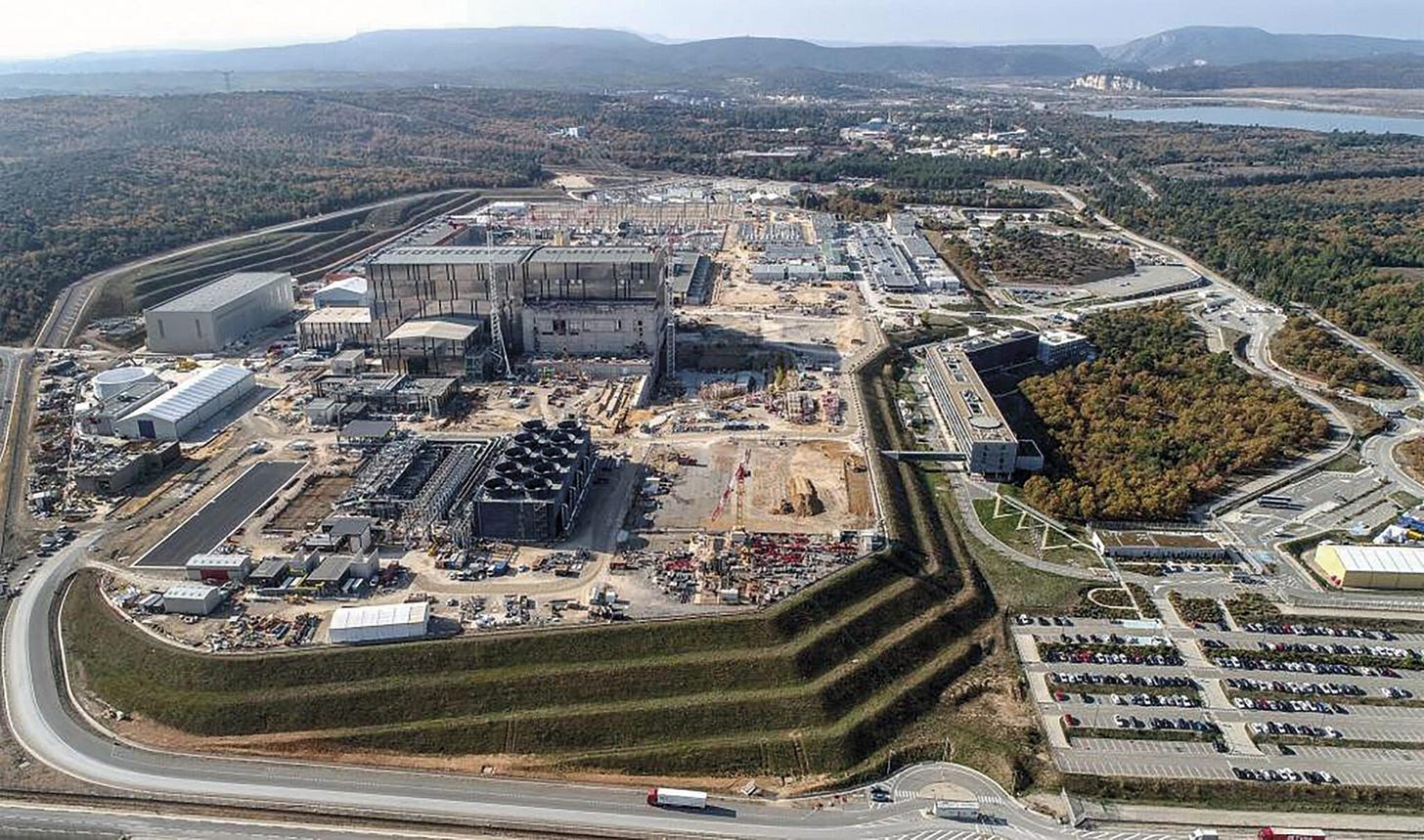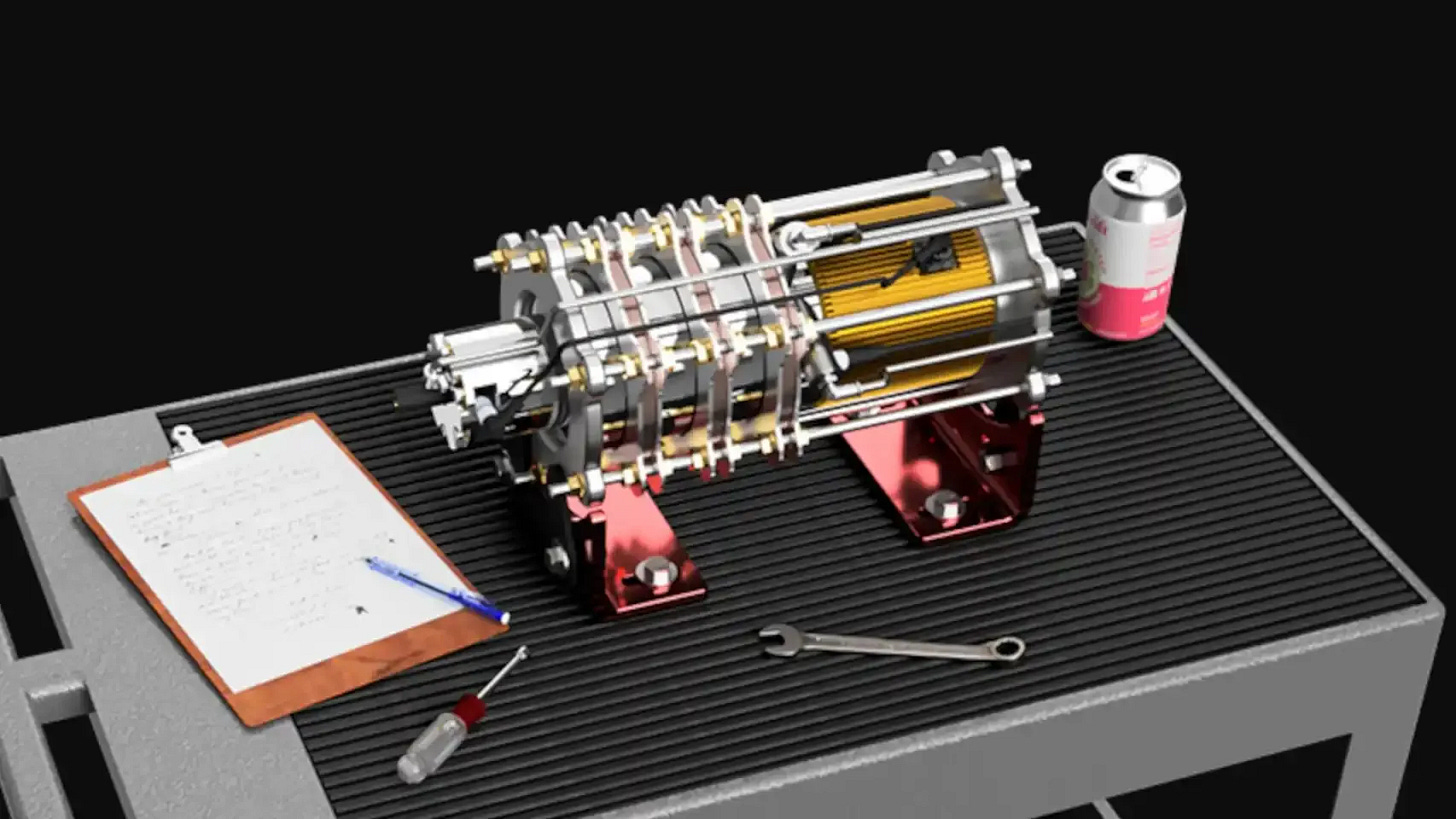#14 Nuclear Fusion
The holy grail of clean energy
Read time: 4 minutes
In this week’s issue you will learn about the energy source that would fuel one person’s entire lifetime with just one glass of water: Nuclear Fusion
“I would like nuclear fusion to become a practical power source. It would provide an inexhaustible supply of energy, without pollution or global warming.“ - Stephen Hawking
Top Nuclear Fusion News 🗞️
Emerging private fusion market: Fusion used to be a public sector issue but now lots of companies are tackling it.
ITER: The latest news from the world's largest nuclear fusion experiment. And all the info you need about this massive project in Southern France.
Nuclear fusion breakthrough: An experiment got more energy out than the laser put in but this does not include the energy to make the whole process work.
Let’s dive in 🧠
There are two types of nuclear energy: fission and fusion
A fusion reactor replicates what happens naturally within the sun’s core. Instead of being split up, atoms get fused together and in the process a lot of energy is released.
How does it work?
There are many different approaches to nuclear fusion but here’s the most common one.
You get hydrogen isotopes (deuterium and tritium). Isotopes are just like the normal hydrogen atoms but a bit different in their structure.
You put them in a doughnut-shaped chamber (tokamak) where they are heated up to 150 million Celsius.
At this temperature the atoms are stripped off of their electrons and you are left with plasma. In order to contain the plasma you use super powerful magnets.
The particles collide and fuse together, just like in the sun.
When they fuse they form helium and they release a lot of thermal energy in the process.
The thermal energy is then used to turn water into steam and to turn a turbine really fast.
The turning of the turbine generates electricity and it goes into the grid where we can use it.
The point is to get atoms so hot that they fuse together and release a lot of energy.
To get there we can use lasers, magnets, reactors of different shapes, different chemical elements, etc.
Why is fusion so awesome?
Low radioactivity: The byproducts of the reaction have very low radioactivity levels and they disappear rather quickly.
Perfect fuel: We can get deuterium from seawater and you can get tritium in the nuclear reaction itself. Really abundant, clean, and extremely energy dense fuel.
Not a bomb: Fusion reactors can’t explode. There’s no chain reaction that can get out of control because the fusion stops if you switch it off or if you stop supplying fuel.
Consistency: Unlike other renewables, this energy could work 24/7 and be plugged into the grid easily.
The goal with fusion is to achieve Q>1.
That means more power generated from the reaction than used. The current record is at 0.7 and it only lasted for 4 billionths of a second.
But to produce more electricity than it takes to run the whole process we need a Q value somewhere between 10 and 25!
Cons
Difficulty: Figuring it out is extremely complex. There’s a joke around fusion that says "fusion is 30 years away and it always will be”.
Cost: Building fusion reactors is extremely expensive given the really rare materials used, infrastructure, massive energy consumption, suppliers, etc.
Legislation: You can imagine all the permits required to build fusion reactors. Especially given the bad reputation any type of nuclear has in some countries.
Top Nuclear Fusion Companies 💰
Avalanche: They are developing economical micro fusion power packs the size of a lunch pail.
Commonwealth Fusion Systems(CFS): They use a new high temperature superconductor to build smaller and lower-cost fusion reactors.
Zap Energy: They use high electrical currents to generate a magnetic field instead of magnets making smaller, simpler, and cheaper reactors.
Also check out all of these fusion startups.
❗Extreme knowledge area❗
Q value: Understanding what Q really means is difficult, here’s a great and very detailed explanation.
CFS founder interview: A fun and insightful podcast episode with the founder of Commonwealth Fusion Systems.
Fusion approaches: A very complete overview of the different ways the main projects worldwide are dealing with fusion.
That’s it for today, 1 climate tech topic in under 5 minutes.
Next week… Vertical Farms! 🤯
If you enjoyed today’s issue, the best compliment you could pay me would be to share it with one person who you think would benefit from it :)










